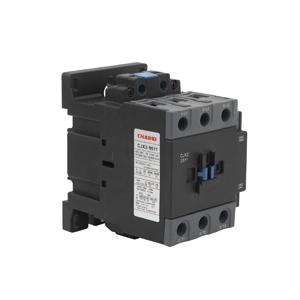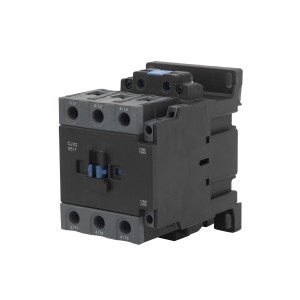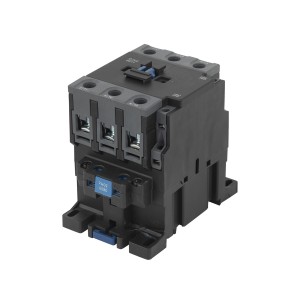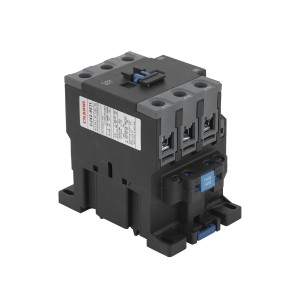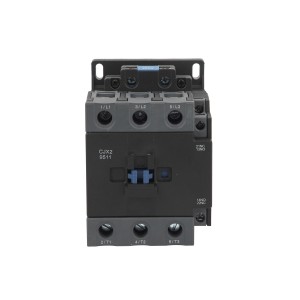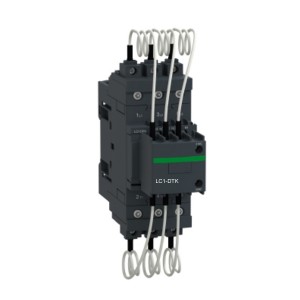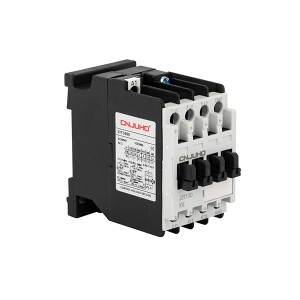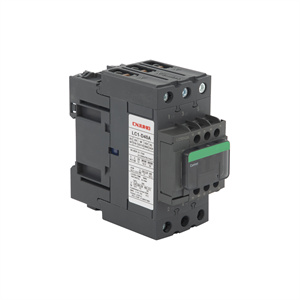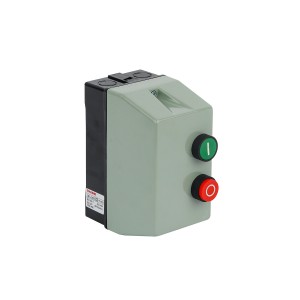JXC AC Contactor 80/95A
Feature
● Rated operation current Ie: 6A~100A
● Rated operation voltage Ue: 220V~690V
● Rated insulation voltage: 690V (JXC-06M~100), 1000V (JXC-120~630)
● Number of poles: 3P and 4P (only for JXC-06M~12M)
● Coil control method: AC (JXC-06(M)~225), DC (JXC-06M~12M),AC/DC (JXC-265~630)
● Installation method: JXC-06M~100 rail and screw installation,JXC-120~630 screw installation
Operation And Installation Conditions
| Type | Operation and installation conditions |
| Installation class | III |
| Pollution degree | 3 |
| Compliant standards | IEC/EN 60947-1, IEC/EN 60947-4-1, IEC/EN 60947-5-1 |
| Certification mark | CE |
| Enclosure protection degree | JXC-06M~38: IP20; JXC-40~100: IP10; JXC-120~630: IP00 |
| Ambient temperature | Operation temperature limits: -35°C~+70°C. Normal operation temperature range: -5°C~+40°C. The 24-hour average temperature should not exceed +35°C. For use beyond the normal operation temperature range, see "Instructions for use in abnormal conditions" in the annex. |
| Altitude | Not exceeding 2000 m above sea level |
| Atmospheric conditions | The relative humidity should not exceed 50% at the upper temperature limit of +70°C. A higher relative humidity is allowed at a lower temperature, e.g. 90% at +20°C. Special precautions should be taken against occasional condensation due to humidity variations. |
| Installation conditions | The angle between the installation surface and the vertical surface should not exceed ±5°. |
| Shock and vibration | The product should be installed in places without significant shaking,shock, and vibration. |
Annex I: Instructions For Use In Abnormal Conditions
Instructions for use of correction factors in high altitude areas
● IEC/EN 60947-4-1 standard defines the relation between alitude and impulse withstand voltage. An alitude of 2000 m above sea
level or lower hasno significant impact on product performance.
● At an altitude higher than 2000 m, air cooling efect and decease of rated impulse withstand voltage have to be considered.In ths
case, design anduse of products have to be negotiated by the manufacturer and the user.
● The correction factors for rated impulse withstand voltage and rated operation current for alitudes higher than 2000 m are given in
the followingtable.The rated operation voltage remains unchanged.
| Altitude (m) | 2000 | 3000 | 4000 |
| Rated impulse withstand voltage correction factor | 1 | 0.88 | 0.78 |
| Rated operation current correction factor | 1 | 0.92 | 0.9 |
Instructions for use under abnormal ambient temperature
● IEC/EN 60947-4-1 standard defines normal operation temperature range for products. Use of products in the normal range will not
cause sig-nificant impact on their performance.
● At an operation temperature higher than +40°C, the tolerable temperature rise of products needs to be reduced. Both rated
operation current and number of contactors in standard products have to be decreased to prevent product damage, shortened
service life, lower reliability, or impact on control voltage. At a temperature lower than -5°C, freezing of insulation and lubrication
grease should be considered to prevent action failures. In these cases, design and use of products have to be negotiated by the
manufacturer and the user.
● The correction factors for different rated operation current under operation temperature higher than +55°C are given in the
following table. The rated operation voltage remains unchanged.

● At the temperature range of +55°C~+70°C, the pull-in voltage range of AC contactors is (90%~110%)Us, and (70%~120%)Us is the
results of cold status tests at 40°C ambient temperature.
Instructions For Derating During Use In Corrosive Environment
● Impact on metal parts
○ Chlorine Cl , nitrogen dioxide NO , hydrogen sulfide H S, sulfur dioxide SO,
○ Copper: The thickness of copper sulfide coating in chlorine environment will be twice that in normal environment conditions. This is
also the case for environments with nitrogen dioxide.
○ Silver: When used in SO or H S environment, the surface of silver or silver coated contacts will become dark due to formation of a
silver sulfide coating.This will lead to higher contact temperature rise and may damage to the contacts.
○ In humid environments where Cl and H S coexist, the coating thickness will increase by 7 times. With presence of both H S and NO ,
the silver sulfide thickness will increase by 20 times.
● Considerations during product selection
○ In refinery, steel, paper, artificial fiber (nylon) industry or other industries using sulphur, equipment may experience vulcanization (also
called oxidization in some industrial sectors). Equipment installed in machine rooms is not always well protected from oxidization.
Short inlets are often used to ensure that the pressure in such rooms is slightly higher than atmospheric pressure, which helps
reduce pollutions due to external factor to a certain degree. However, after operation for 5 to 6 years, the equipment still experience
rust and oxidization inevitably. Hence in operation environments with corrosive gas, the equipment needs to be used with derating.
The derating coefficient relative to the rated value is 0.6 (up to 0.8). This helps reduce rate of accelerated oxidization due to
temperature rise.
Shipping way
By sea, by air, by express carrier

PAYMENT WAY
By T/T,(30% prepaid and the balance will be paid before shipment), L/C(letter of credit)
Certificate


